Posted by Steve Durbin on January 29th, 2008
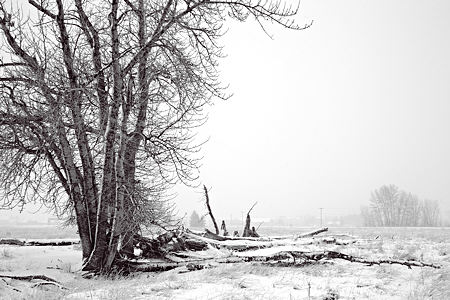
The cottonwood project I’ve embarked on is turning out to have some interesting differences from work I’ve done in the past. Which is a great thing in a project, something that I aim for but can’t predict. This one has has helped me not only to see cottonwoods (and other trees) in a new way, but also to be more aware of genre influences in picturing them. By genre I mean more or less familiar modes or types of photographing, such as landscape or portrait or documentary. Genres are similar in related arts, but painting, for example, has a different history of pictures made, and therefore we view a painted portrait differently than a photographic one.
more… »
Filed in landscape,photography,portrait
- Tags: trees
- Comments closed
Posted by Birgit Zipser on January 25th, 2008

Recently, I spent my leisure time documenting where I lived as a child. As part of my day job, during that time, I used adobe photoshop to pseudocolor grey tone RBG images by cutting color channels in the ‘difference layer’ mode. Trying that trick on two of the Frisia pictures, I came up with the image above.
This, by comparison to the originals, garish image strikes a cord with me. I feel that it epitomizes my memory or feelings about North German Frisia and the coast line – brick farm houses with a hip roof line and oil tankers on a pier in the North Sea.
more… »
Filed in art education
- Comments closed
Posted by Steve Durbin on January 22nd, 2008
According to the saying, it’s either God or the Devil in the details. Either way, there seems to be an inherent fascination with closely observing the finest details in a subject. In museums, given opportunity, people will walk right up to a painting or photograph to examine it as closely as possible. This may happen even if the subject in itself is not so compelling. But when it is…
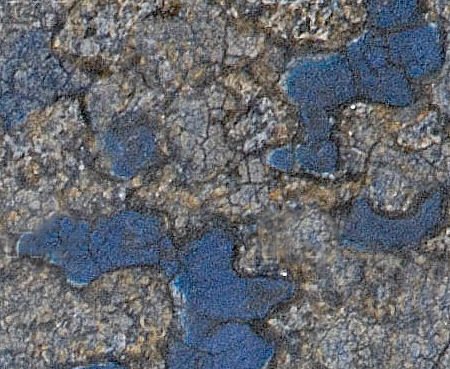
more… »
Filed in across the arts,perception
- Comments closed
Posted by Steve Durbin on January 19th, 2008
I’ve recently read two fascinating books by cartoonist Scott McCloud: Understanding Comics and Making Comics. There is significant overlap, but I would choose the first for greater emphasis on art and graphic design, and the second for more emphasis on storytelling and practical matters. It was well worth reading both, even though I have no intention of drawing comics.
McCloud has a gift for simplifying without oversimplifying. For example, he neatly breaks down the choices to be made in writing with pictures into selection of moment, frame, image, word, and flow. He discusses these elements while keeping in mind the bigger picture, using them to help us understand what comics artists do and ways they can do it. They also serve in analyzing genre and cultural differences, as in his appreciation of Japanese manga. Especially interesting for me were discussions of closure–how we mentally fill in the transitions in a flow of discrete images–and the “masking effect”, the phenomenon of simple, abstractly drawn characters being more effective in leading us to identify with them, rather than observing them.
more… »
Filed in across the arts
- Comments closed
Posted by June Underwood on January 18th, 2008
On a windy frigid Wednesday this week, Jer and I visited the Archie Bray Foundation in Helena, Montana. The visit was frigid, fascinating, and raised some internal questions for me.
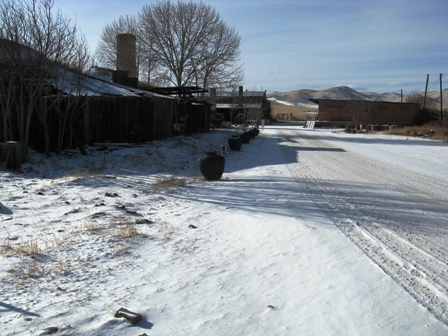
The Archie Bray is a ceramics workshop, foundation, and clay business, started by a brick manufacturer who was fascinated by art ceramics. According the website, the Archie Bray was founded “in 1951 by brickmaker Archie Bray, who intended it to be ‘a place to make available, for all who are seriously and sincerely interested in any of the branches of the ceramic arts, a fine place to work.’ Its primary mission is to provide an environment that stimulates creative work in ceramics.”
more… »
Filed in across the arts,being an artist,ceramics,materials,motivational
- Comments closed
Posted by Sunil Gangadharan on January 17th, 2008
The United States Library of Congress put up thousands of archival pictures from the Great Depression to World War II on Flickr today. A classic collection of photos, they capture in full color an era generally seen and imagined in black-and-white.
The photographs convey a more innocent time when a country did not have to mount multi-million dollar campaigns to elect a president. These photos are in public domain and have no known copyright restrictions. The flickr library here.
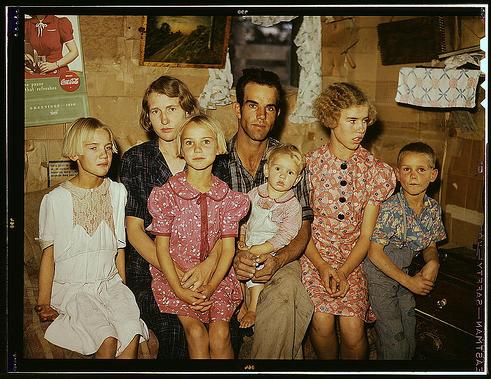
Jack Whinery and his family, homesteaders, Pie Town, New Mexico, Sept 1940, Photographed by Russell Lee
Filed in Uncategorized
- Comments closed
Posted by Steve Durbin on January 14th, 2008
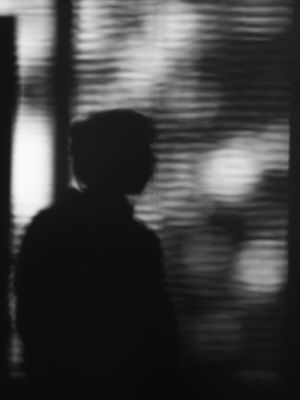
Photographs are tied to place, and my normal practice is to revisit a place repeatedly, attempting to know and see it better. Perhaps less obviously, photographs are also tied to time. Some of the most striking are tied to a moment that can never return. But that’s seldom the case for me: usually the relevant time is seasonal, and will probably recur next year for perhaps a week or, if I’m lucky, a month. The photograph here, though, had unusually stringent constraints: it could only be made within a few minutes of sunrise on a couple days of the year, when the sun is behind a certain tree about twenty-five yards from my office window.
more… »
Filed in photography,portrait
- Comments closed



